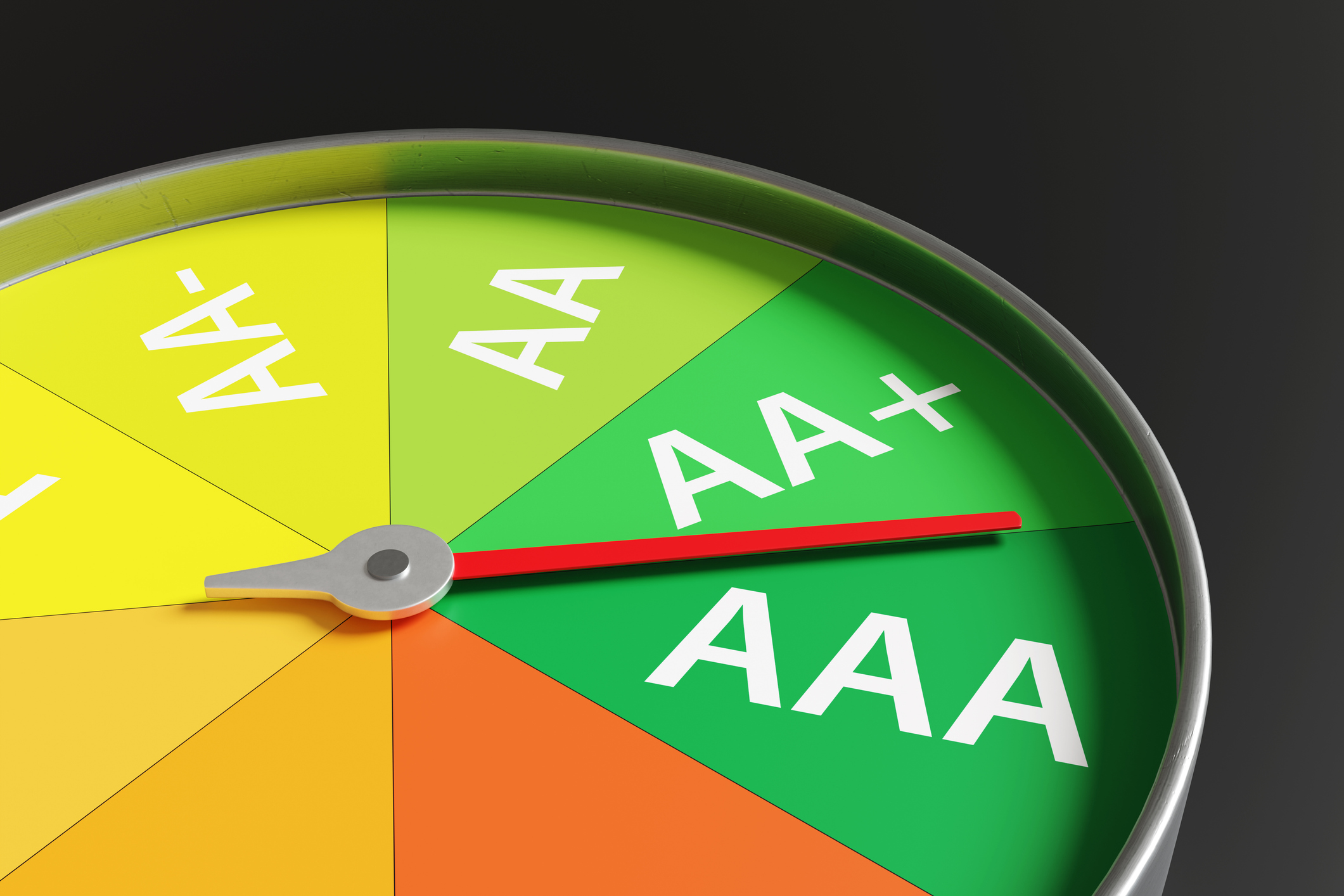Junk Bonds Are Anything But
It is time for high-yield skeptics to concede that the rewards from junk bonds trounce the perceived risks.


Were high-yield corporate bonds a sports franchise, I could honestly deem them a dynasty. I downloaded the Callan Periodic Table of Fixed Income Index Returns, that multicolor matrix of annual results by subcategory. Callan tracks debt classes from one-year Treasury bills to emerging-markets securities. Starting in 2003, the high-yield-bond sector placed first or second 10 times – including in 2023, with the category up more than 9% through November 30. Nothing else has nearly as many gold and silver medals.
High-yield bonds also regularly outgain diversified bond indexes by staggering margins. The SPDR Bloomberg High Yield ETF (JNK) has a 15-year annualized return of 8.0%, compared with 2.6% for the Vanguard Total Bond Market Index Fund (BND). That covers a period that before 2022 was the best run for bonds in my 45-year career. And the SPDR ETF tracks an index.
Actively managed entries such as Fidelity Capital & Income (FAGIX), Hotchkis & Wiley High Yield (HWHAX), PGIM High Yield (PBHAX) and T. Rowe Price High Yield (PRHYX) show markedly better results consistently; analysts and managers in this field are experienced specialists who are diligent to a fault. (Bond funds I like are in bold.)
From just $107.88 $24.99 for Kiplinger Personal Finance
Become a smarter, better informed investor. Subscribe from just $107.88 $24.99, plus get up to 4 Special Issues

Sign up for Kiplinger’s Free Newsletters
Profit and prosper with the best of expert advice on investing, taxes, retirement, personal finance and more - straight to your e-mail.
Profit and prosper with the best of expert advice - straight to your e-mail.
I joshed with Dan DeYoung, comanager of another long-term exemplar, Columbia High Yield (INEAX), that the 1980s-vintage moniker "junk" is obsolete. "Well, the market in general is much higher quality than 15 or 20 years ago," says DeYoung, who entered the sector straight out of college 20 years ago and has seen it evolve from madness to "real companies with $1 billion of earnings." Jeff Schulze, of ClearBridge Investments, echoes this: "To your point, it is a lot less junky."
It is time for high-yield skeptics to concede that rewards here trounce perceived risks. The risk of defaults is exaggerated. Outside of the 2008 financial crisis and the 2020 COVID shutdown, long-running default rates run about 2%, which barely nick the performance advantage. And when a borrower does skip out, bond-holders normally recover a third to half their principal anyway. Stockholders suffer worse.
Interest rate movements are another plus. Rising rates can clobber Treasuries and lower-coupon corporates but sometimes help the high-yield sector if the impetus for the rate action is economic vigor; 2023 is a good example.
Then come technical factors, which also explain 2023's rally. Demand for bonds rated BB and B-minus dwarfs supply as companies postpone issuance until interest rates fall. Dodgy and scandal-prone deals are relegated to the leveraged-loan and private-credit realms. Yield spreads between Treasury bonds and high-yield issues are thus unlikely to explode to eight or 10 percentage points even in a recession (which I still do not expect), which would crack fund shareholders with heavy losses. At worst, you should break even in 2024. In my heart, I expect much better.
Finally, the sector remains well priced. Fund listings overflow with portfolios whose bonds trade below 90 cents of par value. So as energy, transport and industrial companies earn ratings upgrades and supply tightens, there is room for price gains atop the 7% yields. Choose three funds from the names listed above, or hunt for your own among active funds with 10-year records and 20-year veterans at the controls. Set aside as much as 15% to 20% of your fixed-income allocation. This is a rare idea that wins in the short and the long run.
Note: This item first appeared in Kiplinger's Personal Finance Magazine, a monthly, trustworthy source of advice and guidance. Subscribe to help you make more money and keep more of the money you make here.
Related content
Profit and prosper with the best of Kiplinger's advice on investing, taxes, retirement, personal finance and much more. Delivered daily. Enter your email in the box and click Sign Me Up.

Kosnett is the editor of Kiplinger Investing for Income and writes the "Cash in Hand" column for Kiplinger Personal Finance. He is an income-investing expert who covers bonds, real estate investment trusts, oil and gas income deals, dividend stocks and anything else that pays interest and dividends. He joined Kiplinger in 1981 after six years in newspapers, including the Baltimore Sun. He is a 1976 journalism graduate from the Medill School at Northwestern University and completed an executive program at the Carnegie-Mellon University business school in 1978.
-
 I'm want to give my 3 grandkids $5K each for Christmas.
I'm want to give my 3 grandkids $5K each for Christmas.You're comfortably retired and want to give your grandkids a big Christmas check, but their parents are worried they might spend it all. We ask the pros for help.
-
 If You're Not Doing Roth Conversions, You Need to Read This
If You're Not Doing Roth Conversions, You Need to Read ThisRoth conversions and other Roth strategies can be complex, but don't dismiss these tax planning tools outright. They could really work for you and your heirs.
-
 Could Traditional Retirement Expectations Be Killing Us?
Could Traditional Retirement Expectations Be Killing Us?A retirement psychologist makes the case: A fulfilling retirement begins with a blueprint for living, rather than simply the accumulation of a large nest egg.
-
 The Most Tax-Friendly States for Investing in 2025 (Hint: There Are Two)
The Most Tax-Friendly States for Investing in 2025 (Hint: There Are Two)State Taxes Living in one of these places could lower your 2025 investment taxes — especially if you invest in real estate.
-
 The Final Countdown for Retirees with Investment Income
The Final Countdown for Retirees with Investment IncomeRetirement Tax Don’t assume Social Security withholding is enough. Some retirement income may require a quarterly estimated tax payment by the September 15 deadline.
-
 Bond Basics: Zero-Coupon Bonds
Bond Basics: Zero-Coupon Bondsinvesting These investments are attractive only to a select few. Find out if they're right for you.
-
 Bond Basics: How to Reduce the Risks
Bond Basics: How to Reduce the Risksinvesting Bonds have risks you won't find in other types of investments. Find out how to spot risky bonds and how to avoid them.
-
 Why Investors Needn't Worry About U.S. Credit Downgrade
Why Investors Needn't Worry About U.S. Credit DowngradeFitch Ratings The United States saw its credit rating downgraded for just the second time in history, but experts aren't worried about the long-term damage to stocks.
-
 What's the Difference Between a Bond's Price and Value?
What's the Difference Between a Bond's Price and Value?bonds Bonds are complex. Learning about how to trade them is as important as why to trade them.
-
 Bond Basics: U.S. Agency Bonds
Bond Basics: U.S. Agency Bondsinvesting These investments are close enough to government bonds in terms of safety, but make sure you're aware of the risks.
-
 Bond Ratings and What They Mean
Bond Ratings and What They Meaninvesting Bond ratings measure the creditworthiness of your bond issuer. Understanding bond ratings can help you limit your risk and maximize your yield.